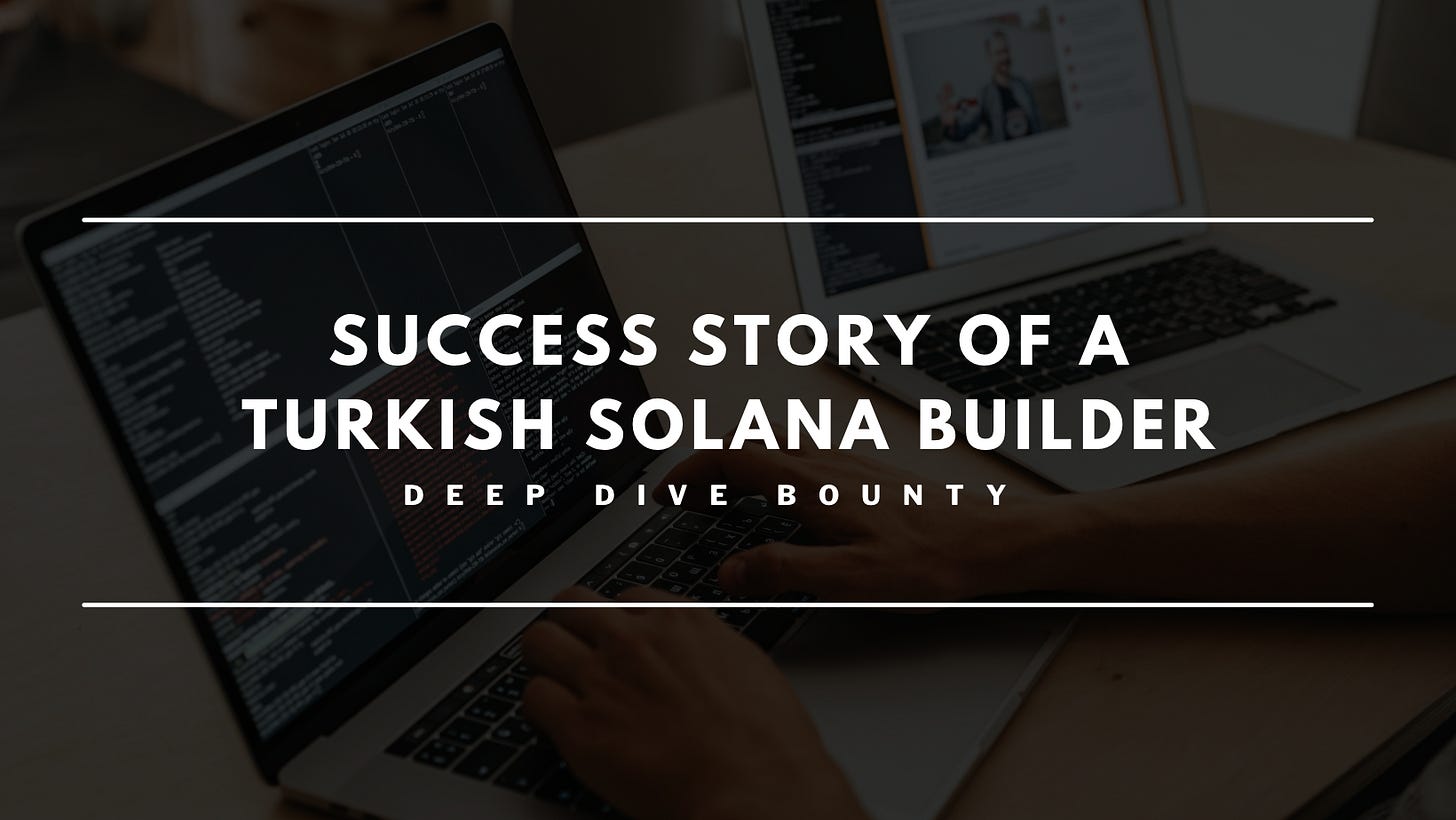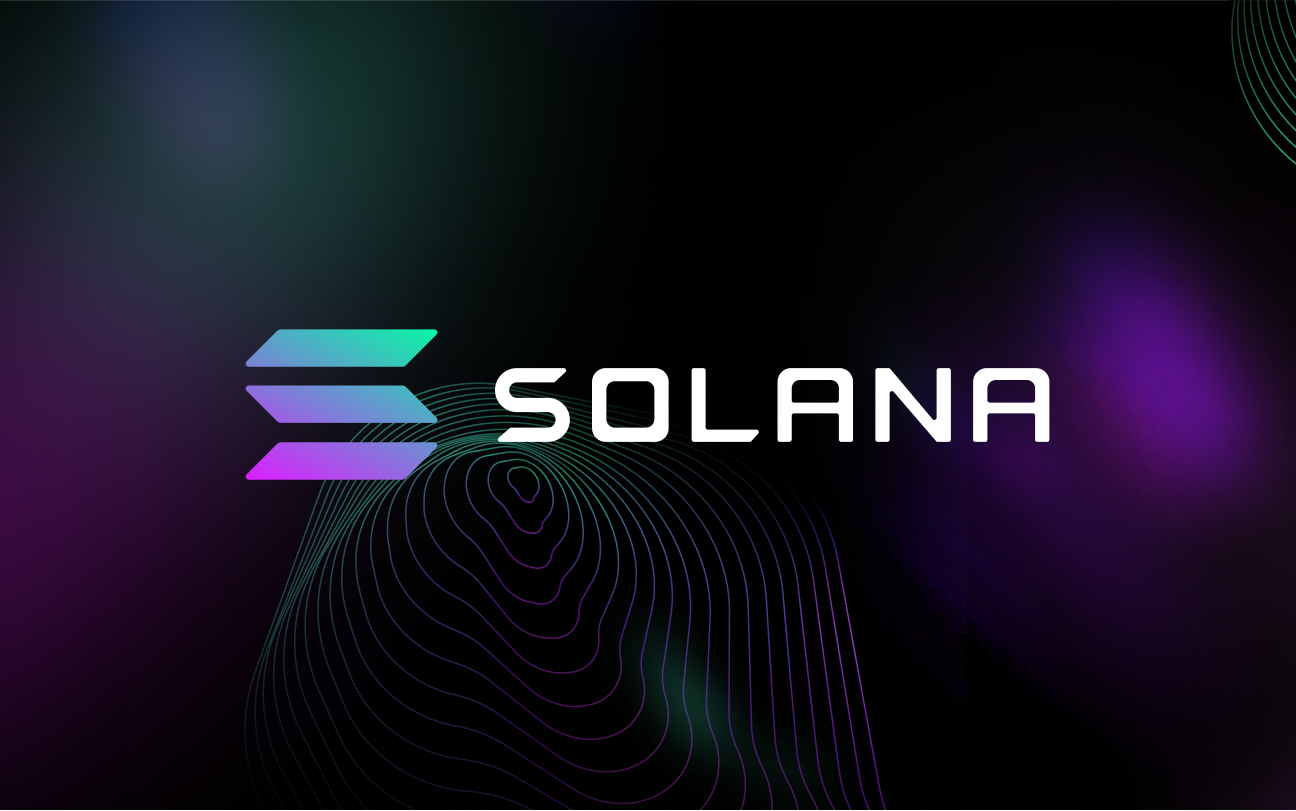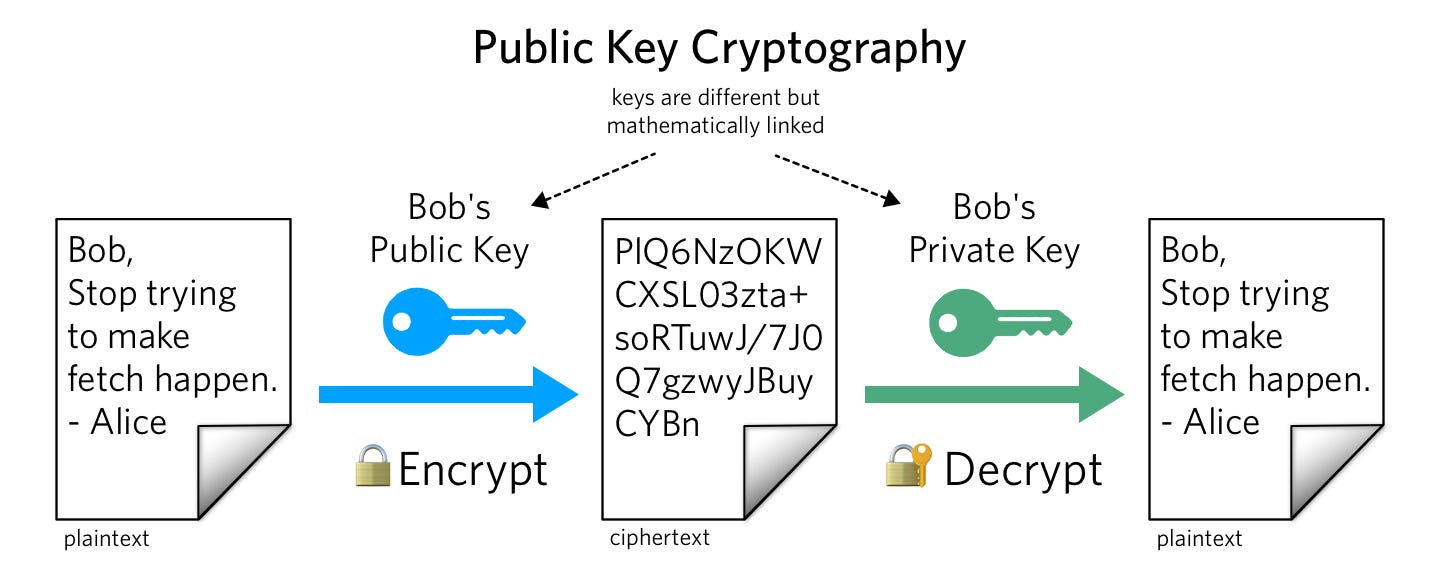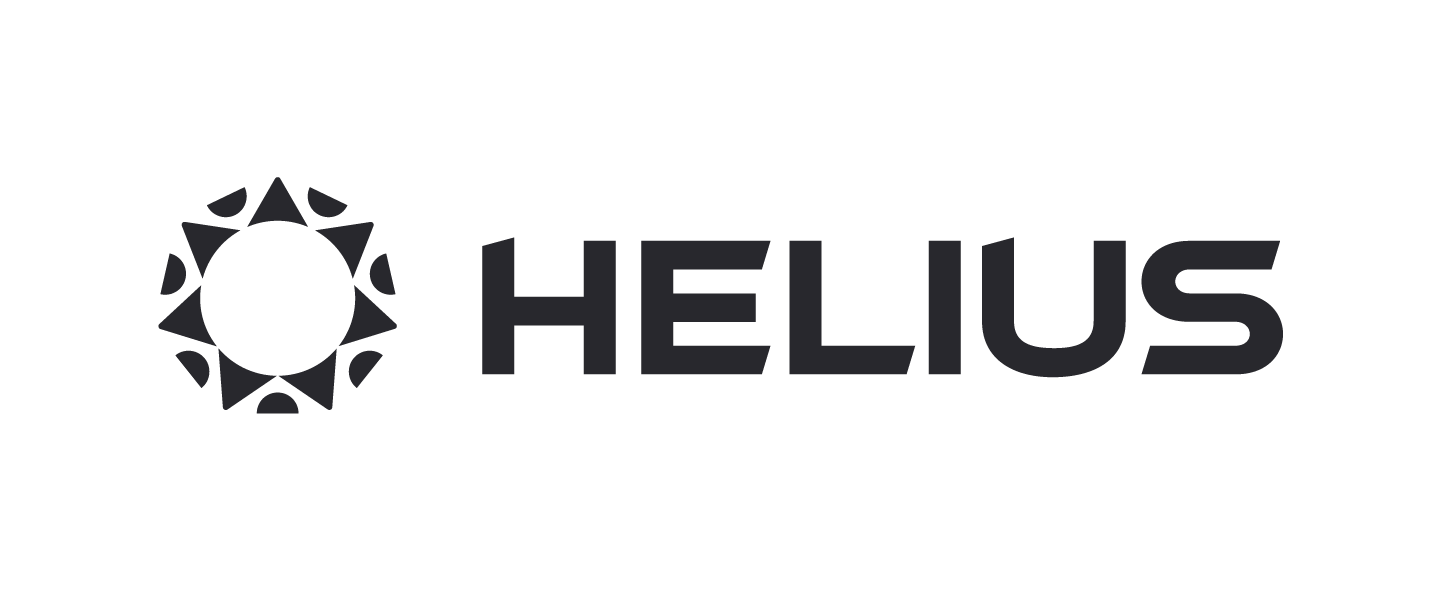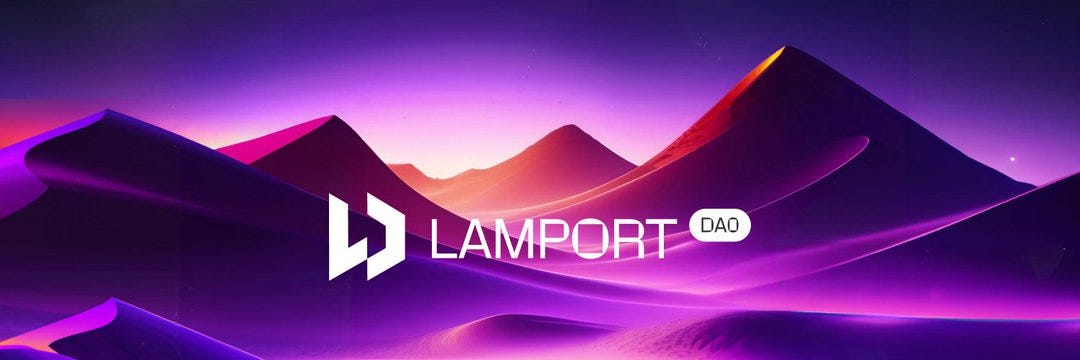Deep Dive into the Success Story of a Turkish Solana Builder
Let's look at Mert Mumtaz's Career, Advice and path to becoming a Solana Developer
From the moment we start developing a project, it can face difficulties. To overcome these difficulties, we can choose the following ways.
1) Getting right by trying a lot
2) You can find someone who has gone through the field you want to learn before and learn from them how they overcome these difficulties.
I prefer to follow option 2 here.
Today, I'm going to tell you about the life and adventure of Mert Mumtaz, one of the Turkish Solana Builders, and how he came up with solutions to the challenges he faced. I'll be showing advice and roadmaps to people who want to develop on Solana.✍️
First of all, I want to introduce Solana.
The Solana Ecosystem has recently gained popularity, particularly in Turkey, where it has become a key player in the growing Blockchain industry.📈The Solana ecosystem is a decentralized platform for building and deploying decentralized applications(dApp). It is based on the Solana blockchain, a high-performance, scalable blockchain that can handle many transactions per second, and Solana Transaction fees are so low.
In this way, many projects were developed on Solana. The development of these projects on Solana was not easy. They got errors with Rust. They got framework errors. There were errors when the operating systems were different. But at the end of the day, they found a solution by working on them. This was the community that supported the most while finding ways to solve the problem.
Mert Mumtaz
Now I will tell you about Mert Mumtaz, one of the Turkish Solana Developers.
Mert received his undergraduate degree in Applied Mathematics & Computing and Communications Engineering from Queen's University.👨🎓 He wanted to pursue a career in Mathematics and Physics. He was an intern at Blackberry. Here he learned JavaScript and jQuery. He worked in the field of cloud systems.
He had taken a course in Cryptography while at university. In this way, he met Blockchain for the first time. At that time, he thought that he needed to do a PhD to do something in this field, but he later realized that it was not necessary. He did not continue in this field afterward.👨🏫
He worked as a Software Engineer in 3 banks in Canada. He worked in areas such as payment infrastructure and withdrawing and depositing money from ATMs. He has also worked on cybersecurity issues. It has developed software that offers solutions on investment instruments that trade.
While working in Canada, another task he did was to finance entrepreneurs in Australia. He had an idea of the procedures involved when financing a company from Canada to Australia. He offered to use Blockchain technology to make these Finance transactions. The result of this proposal was not viewed positively. Here, Mert asked himself, "Why don't we use something like this Bitcoin?" Working time here as a year is 2020-2021.
Coinbase is where Mert fully enters into Blockchain technology. Mert started working at Coinbase as a software engineer. He says he had the opportunity to work with incredible Software developers there. He had the opportunity to work with real Cryptographers and Protocol Engineers. The department where Mert worked was the Financial Center area. He learned about many blockchain projects.
While working at Coinbase, an engineer produces NFT for employees and says he gives it away for free. He did this NFT on Ethereum. He spent 320 Canadian dollars in Transaction fees while minting NFT for free. Not exactly free. This subject did not like Mert much.💸
He then decided to look into this area as he knew that the transfer fees on Solana were very low. After installing the Phantom wallet, he studied projects such as Raydium and Orca. A lot of NFTs participated in the mint phase.
Mert has a career in Finance, first in Big banks, then in the Fintech field, and then into Crypto.
He was very active on Twitter during this time. He shares graphs about the data in Solana. He shared posts about it and people liked them. When you make any development, the ecosystem and the community immediately realized that they are in interaction. He saw that Solana had the best community as a community.
It is difficult to develop a project on Solana. He started the Helius project to remove the difficulty in this area. Mert is one of the co-founders of this project. Solana is a powerful platform, but its sheer scale and performance can make it difficult to work with. Installing and managing RPC nodes can be expensive and real-time architectures are difficult to design. Additionally, on-chain data can be difficult to index and understand
Helius takes care of it all for you by providing world-class infrastructure, fast data lines, and reliable smart contract resolvers. With our APIs, you can get started quickly and focus on building your product without the tedious details of managing on-chain data.🚀
Helius currently offers three core services:
-Turbocharged RPCs
-Advanced Solana Transactions and NFT APIs (more on that below)
-Low latency webhooks
Another project established by Mert is Lamport Dao.
Lamport Dao is a community that aims to be a hub for Solana developers. Solana offers its developers a special reward system. They're holding a Sandstrom Hackathon. If you are looking for a Hackathon on Solana, I recommend you join.
Let's have a look at Mert Mumtaz's views on the Crypto space;
'I see potential in the Crypto space. I think it will help with financial means of payment and freedom of payment. I think Crypto will help heal the Earth. Solana is a very good place to do this upgrade. I think it's the best choice for scaling.'
I am writing to you about Mert Mumtaz's advice to us;👨🏻💻
1- Take Action.
2- Find a bug or problem and develop it. Build something.
3- Don't just read.
4-Understand how transactions work.
5- After you start producing things, you will start to find problems. Concentrate on these.
I reached out to Mert Mumtaz and asked,
'What kind of roadmap would you recommend to those who want to become Solana Developers'?
Mert Mumtaz: 'I would recommend following a few Solana developers on Twitter and being active in the community, get involved with LamportDAO and Superteam Turkey'
For those who want to develop on Solana, he sent a few document links. I'm adding them below.
I really think Mert is an exemplary developer. I see him as someone to take as an example not only for Turks but also for the whole world. I see that the undergraduate education he received from the finance and blockchain firm he worked for contributed a lot. Mert is 27 years old, but his work shows that anyone can achieve them at a young age. As a developer, I add Mert Mumtaz to my idols.✨
In this article, I wanted to add some advice from non-Turkish Solana developers.
Let's start with Anatoly Yakovenko, one of Solana's Co-Founders.
” The most important thing in the Cryptocurrency ecosystem right now is to produce as fast as possible.”💨
As we see in this advice, instead of waiting for something to be perfect when starting something, we see the benefit of taking action and putting forward something.
I will write another recommendation from the Cronos team that attended the Solana Hackathon;
1- Learn Rust first.
2- Then try to understand Anchor Framework.
3- Then understand how Solana works.
4- Make a To-Do app.
5- Don't go and try to learn Anchor Framework right away. You have to go step by step.
6- You should work on these every day.
7- The pass is difficult to learn but not insurmountable.
8- Spend time at Solana Repo.
and finally the advice of
Chase Barker, Head of the Developer team at the Solana Foundation
“My advice is to always learn and build on Rust. When you encounter a problem, focus on solving it.'
My views;
Mert has drawn a good path with his knowledge of Finance and Blockchain in different sectors. In this way, he worked in companies that we all wanted to work for. He gave me a lot of information about how I should proceed. If we want to do any improvement on Solana, we have to start right now. By learning Rust and then understanding the Anchor framework, we can do great things in this area. I will also have a roadmap for you. I will also put the training links below on this map.
1-What is Solana? How does it work? learn them 👨🏫
+Here I will direct you to Patika and BuildSpace. 'How to draw a roadmap as Solana developer?' are great training places to show it off.
2- Learn Rust
+For this, I will give you advice from Youtube. Check out 'Let's Get Rusty' and 'Tech with Tim'.
3- Learn Anchor Framework
+I advise you to learn this time by developing a project directly. I'm directing you to the 'Build Solana Todo App with Rust(Anchor)' video on the 'Clever Programmer' channel.
4- Make a project about a problem you are facing
+ After learning so much, create projects related to them. In this way, you can benefit from Grant programs.
You have all the knowledge to develop on Solana. Let's start developing projects on Solana.👨💻
For those who want to develop on Solana, I will add a few videos and documents about how to make the roadmap. See you in another article. 👋
Mert Mumtaz's links:
https://docs.helius.xyz/introduction/why-helius
https://solana.com/developers
Other links:
https://twitter.com/LamportDAO
https://www.patika.dev/web3
https://buildspace.so/builds
https://www.youtube.com/@letsgetrusty
https://cryptopotato.com/language/tr/anatoly-yakovenko-ile-ozel-roportaj-solananin-onumuzdeki-5-yili-nasil-gececek/
https://solana.com/tr/riptide/voting/cronos



